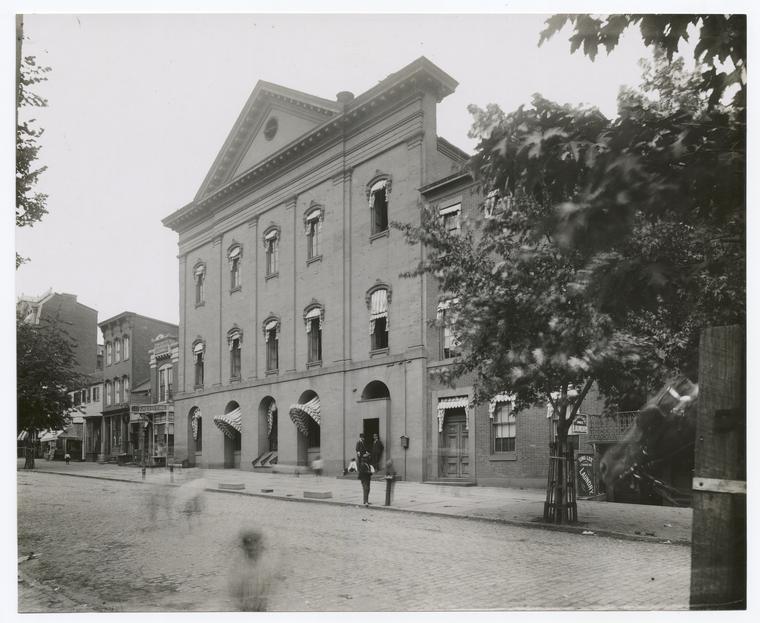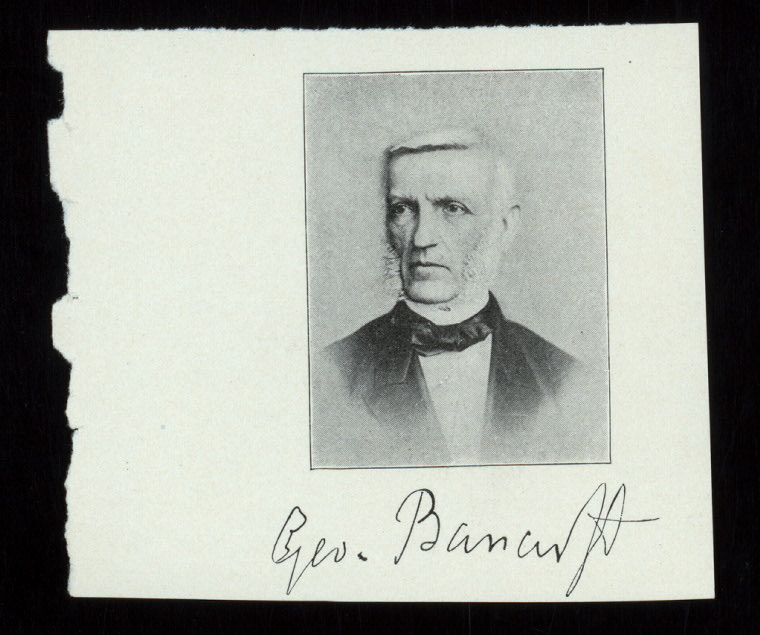Poetry
The Union Remembers Lincoln
April 14 marks the 150th anniversary of Abraham Lincoln’s assassination. Upon learning of the president’s death, the nation responded with shock, confusion, outrage, and sorrow. This tumultuous period was captured by the printing and photography of the time: both in immediate ephemera and later, more contemplative works. This material culture is stewarded by many research divisions at NYPL, including the Rare Book Division. Through these objects, we can glimpse how a nation honored and mourned its first assassinated leader.

President Lincoln was fatally shot in 1865, less than one week after the Civil War ended with the surrender of Confederate forces. He was attending a performance of the play Our American Cousin at Ford’s Theatre in Washington, DC. Newspapers immediately reported on the event, even while the fates of Lincoln and Secretary of State William Seward, who also suffered an attempt on his life, were unknown. The perpetrators were quickly identified and most were apprehended, but assassin John Wilkes Booth and his accomplice David Herold evaded authorities. To speed their arrest, Edwin Stanton, Secretary of War, distributed broadsides calling for their capture with a $100,000 reward—extremely high for the time. Booth and Herold were found six days later in Virginia, in a confrontation during which Booth was shot and killed. The final conspirator, John Surratt, was not caught until 1867, after his mother and co-conspirator Mary had been tried and hanged.
Besides broadsides, another contemporary form of printing that was quickly and cheaply produced was the dime novel. Pioneered by Erastus Beadle, who founded Beadle & Company in New York City in the late 1850s, these short volumes with illustrated paper covers were offered in thematic series; new installments were published usually weekly or monthly. They were an immediate hit, entertaining a wide audience with tales of adventure, mystery, and suspense. During the Civil War, soldiers consumed them voraciously, and even President Lincoln was a confirmed reader. A more educational, serious series of dime novels was Lives of Great Americans, whose number eleven issue narrated the life of Lincoln. Prepared in 1864, the book originally concluded with the events of the previous year. In the wake of the assassination, author and Beadle & Company editor Orville James Victor added a memorial preface eulogizing the president. “Few men realized the magnitude of his task,” Victor wrote, “—it was too mighty for comprehension; few men were dispassionate enough to judge justly; few were wise enough to judge understandingly. Hence, he labored as one whose destiny it was to work without immediate reward—awaiting the future, which would condemn or applaud as his achievements deserved.”

Before being buried in Illinois, Lincoln’s body traveled along a funeral procession that ran from Washington, D.C. to Springfield, with stops in major cities along the way, including New York City. Richard Sloan has carefully pulled together contemporary accounts of the event. Buildings throughout the city were draped in black mourning fabric, and citizens hung portraits of the president and home-made signs from their windows and roofs. Silence enveloped the city, broken only by tolling bells, ceremonial gunfire, and funeral music.
On April 24, Lincoln’s casket was escorted to City Hall, where it lay in state for members of the public to pay their respects, including a group of veterans of the War of 1812. The following day, the casket traveled north on Broadway to the train station, escorted by New York City’s Seventh Regiment in a surrounding square. Two to three hundred African Americans marched in the procession. Initially about 5,000 planned to join, but their participation was banned by the event’s committee for fear of riots in response. Secretary Stanton overrode this decision, and the committee’s fears proved entirely unfounded. The New York Times reported that theirs “was the only portion of the procession which was received with any demonstration of applause. For them a just and kindly enthusiasm overrode the proprieties of the occasion, and handkerchiefs waved and voices cheered all along as they marched.”
Over half a million people—more than half of Manhattan’s total population at that time—gathered along the procession route to pay their respects and observe Lincoln’s body as it lay in state. One of these people was future president Teddy Roosevelt, who was six years old at the time and living on Broadway. Two hours later, the city convened a public memorial service in Union Square. Former Secretary of the Navy and diplomat George Bancroft led the ceremony. Four hours after that, Booth was caught and killed.
It is hard to think of a more fitting elegist for Lincoln than Walt Whitman, who was in New York City at the time of Lincoln’s assassination. Whitman had long admired the president, and his death was a great blow to the poet. Whitman memorialized Lincoln with several poems, including one of his most famous, “O Captain! My Captain!,” and “When Lilacs Last in the Dooryard Bloom’d.” He eventually assembled all of his memorial poems into a section of his Leaves of Grass, beginning in the 1881 edition. A few years earlier, Whitman also began a tradition of presenting public lectures on Lincoln to commemorate the anniversary of his death.

I leave you with a passage from Whitman’s “When Lilacs Last in the Dooryard Bloom’d.” Here, Whitman describes Lincoln’s funeral procession in specific, evocative language that dovetails with contemporary journalistic accounts. He ends the canto, however, with a simple, personal gesture, mourning the fallen president who was both hero and kindred spirit.
Coffin that passes through lanes and streets,
Through day and night with the great cloud darkening the land,
With the pomp of the inloop’d flags with the cities draped in black,
With the show of the States themselves as of crape-veil’d women standing,
With processions long and winding and the flambeaus of the night,
With the countless torches lit, with the silent sea of faces and the unbared heads,
With the waiting depot, the arriving coffin, and the sombre faces,
With dirges through the night, with the thousand voices rising strong and solemn,
With all the mournful voices of the dirges pour’d around the coffin,
The dim-lit churches and the shuddering organs — where amid these you journey,
With the tolling tolling bells’ perpetual clang,
Here, coffin that slowly passes,
I give you my sprig of lilac.
Image Credits: New York Public Library. Astor, Lenox, Tilden Foundations.
Read E-Books with SimplyE
 With your library card, it's easier than ever to choose from more than 300,000 e-books on SimplyE, The New York Public Library's free e-reader app. Gain access to digital resources for all ages, including e-books, audiobooks, databases, and more.
With your library card, it's easier than ever to choose from more than 300,000 e-books on SimplyE, The New York Public Library's free e-reader app. Gain access to digital resources for all ages, including e-books, audiobooks, databases, and more.
If you don’t have an NYPL library card, New York State residents can apply for a digital card online or through SimplyE (available on the App Store or Google Play).
Need more help? Read our guide to using SimplyE.
